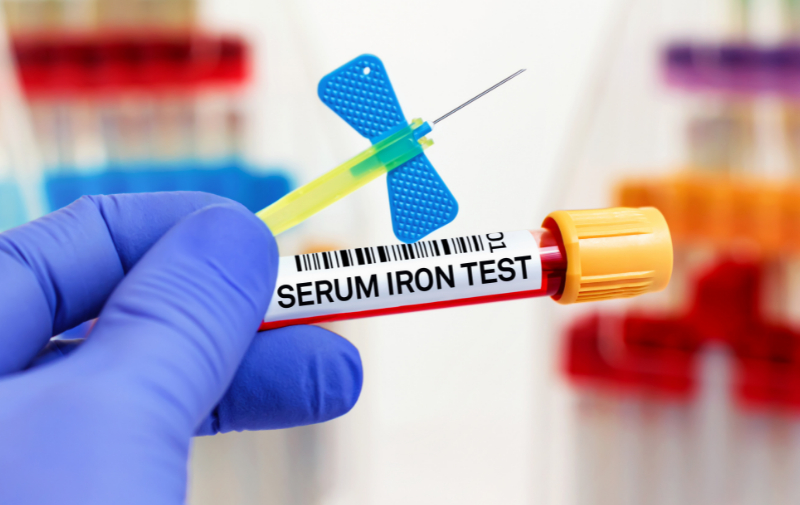Iron is an essential nutrient required for the healthy functioning of the body. It plays several functions in the body, the primary one being the production of healthy red blood cells. It also forms part of hemoglobin, which is the protein in red blood cells that binds oxygen in the lungs, and releases oxygen when it is circulated to other parts of the body. The remainder of the iron is stored in body tissues in the form of ferritin or hemosiderin, with additional small amounts that are used to make myoglobin and other enzymes.
Iron is found in all of the body’s cells. Since the body cannot produce iron, it must absorb it from the foods that we eat. Once the iron is absorbed by the body, it binds with transferrin, which is a protein produced by the liver so that it can be transported throughout the body.
What does the Iron blood test do?
The iron blood test is also known as the serum iron test and it measures the amount of iron present in the liquid portion of the blood. The serum iron test is often ordered as a follow-up to a complete blood test. It is often ordered with other iron tests, like transferrin and TIBC (total iron-binding capacity). The tests are often ordered at the same time and the results are analyzed and interpreted in light of one another to help in diagnosing or monitoring iron deficiency or iron overload.
What is TIBC?
TIBC is also known as total iron-binding capacity. The TIBC blood test is used to measure iron saturation in the bloodstream and to gauge whether there is too much iron or too little in the body.
The TIBC lab test measures how much iron can be bound by the proteins in the blood. It essentially checks transferrin which is the main protein in the blood that binds to iron and circulates it. The TIBC levels are a good reflection of the amount of transferrin available in the body, but TIBC and transferrin are not synonymous.
When are Iron and TIBC tests ordered?
The tests are ordered when the results from the complete blood test indicate that the person’s hemoglobin and hematocrit are low, and their red blood cells are smaller and paler than normal - they are microcytic and hypochromic, which suggests that the person may have iron deficiency anemia in the absence of other clinical symptoms.
The test may also be ordered by the doctor when the patient develops signs of anemia, like:
In addition, the test may also be ordered when the patient is suspected to have an excess of iron in the body. The signs and symptoms of iron overload tend to vary from person to person. They also deteriorate over time. The symptoms are associated with the accumulation of iron in the blood and tissues, common signs include:
Serum iron tests may also be ordered when an individual is suspected to have taken iron tablets. The test results can help with identifying and analyzing how severe the poisoning is.
What do the results mean?
Normal values of TIBC tend to vary amongst different labs. However, many labs have defined a common normal range for adults between 250 to 450 micrograms per deciliter (mcg/dL).
High TIBC indicates that levels are above 450 mcg/dL, this means that there is a low level of iron in the blood. This is often caused by a number of reasons, such as a lack of iron in the diet, pregnancy, and a heavy loss of blood during menstruation.
Low TIBC levels are below 250 mcg/dL. This implies that there is a high level of iron in the blood, and this usually occurs because of the following conditions:
-
Iron or lead poisoning
-
Frequent blood transfusions
-
Liver damage
-
Hemochromatosis is a genetic condition that causes the build-up of iron in the body
-
Sickle cell anemia is an inherited condition that causes the red blood cells in the body to change shape
-
Hemolytic anemia, which a condition that causes red blood cells to die prematurely
The doctor will assess and explain your results to you, discussing what they mean for your health and what the follow-up treatment plan should be. If the results suggest that you have an underlying condition, you must seek treatment immediately. Leaving underlying conditions unattended increases the risk for serious complications like liver disease, heart attack, heart failure, metabolic issues, diabetes, bone problems and diseases, and hormone disorders.












